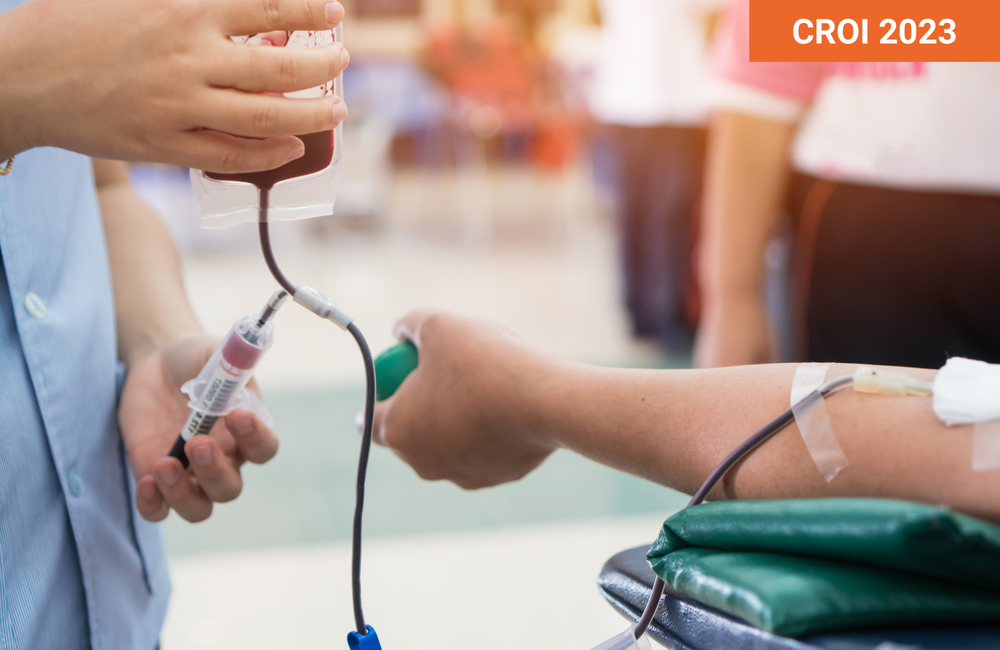
Two clinical trials show that giving a single infusion of genetically modified CD4 cells increased CD4 count, reduced the size of the HIV reservoir, and controlled viral loads over durations lasting weeks to years. Dr Ana Enriquez of Emory University presented the results this February at the 30th Conference on Retroviruses and Opportunistic Infections (CROI 2023) in Seattle.
Only a few people, including the so-called ‘Berlin’ and ‘London’ patients, have been functionally cured of HIV after receiving stem cell transplants from donors with a certain genetic mutation that results in CD4 cells lacking CCR5 receptors, the doorways through which most types of HIV enter the body.
“Although this therapy seems highly effective in these patients, it's cumbersome, it's expensive, and it's not accessible to all people living with HIV,” Enriquez said. These limitations come down to three main factors: this type of transplant is only performed as part of cancer treatment, it relies on donors who naturally have this mutation, and the mutation is rare.
The work of Enriquez and her colleagues aims to create a therapy that would bridge those gaps. Their technology withdraws blood from people with HIV, filters and removes CD4 cells from the body, and then returns the rest of the blood to the body. In the lab, the collected CD4 cells are genetically modified using a zinc finger nuclease, which interrupts the CCR5 gene sequence, permanently disabling it in the cells. The CCR5-deficient cells, termed SB-728-T, are then infused back into the person. A decade ago, a phase 1 clinical indicated that the infusions were safe and well tolerated.
Enriquez summarised the results of two clinical trials that were published as a preprint in 2021, but are yet to be reviewed by other scientists. The first trial (SB-728-902) gave a single infusion to nine people classified as “immune nonresponders,” which refers to people with HIV who maintain relatively low CD4 counts even after years of taking antiretroviral therapy (ART). The nine people had CD4 levels between 200 and 500 when they started the study, and they continued ART for the four-year follow-up period.
In agreement with earlier findings, participants experienced an increase in CD4 count following the infusion that was significantly above baseline (+162) for three to four years. In addition, four of the nine participants saw a 90% reduction in the HIV reservoir, as measured by HIV DNA copies per million cells.
To explore why the infusions shrank the reservoir, the researchers analysed the participants’ CD4 cells and found a unique type that exhibits properties of long-lived, self-renewing memory CD4 cells called Tscm. Enriquez reported that these unique cells were not present in samples taken before gene therapy, but they were detected for up to four years after the infusion, suggesting the cells contribute to the protective effects.
However, a remaining question was whether the infusions could result in long-term suppression of HIV in the absence of ART. The second clinical trial (SB-728-1101) assessed nine people who first had escalating doses of cyclophosphamide—a drug used as chemotherapy to treat cancer—to promote CD4+ cell production. The group then received a single infusion of genetically modified CD4 cells, and stopped their ART six weeks later. Four people had viral loads at or above 10,000 at week 22 and resumed ART. The other five people had lower viral loads and continued treatment interruptions for at least 12 months in total. One of those five was able to maintain viral loads of around 100 for five years after receiving a single infusion. However, the study authors note that this person was born with a single copy of the mutation that causes CD4 cells to lack CCR5 receptors, which may have contributed to his ability to maintain viral control.
The analysis found that the participants who maintained treatment interruption for at least 12 months had higher levels of the unique CD4 cells identified in the previous trial as compared to other participants. Furthermore, the researchers found that the presence of these cells corresponded to lower viral loads.
Enriquez noted during a press conference that scalability of the infusion process remains an issue because it requires a complex process of withdrawing and filtering blood. The researchers are seeking funding to develop ways to make the process easier and faster so they can test it in larger groups.
Enriquez A et al. Single Infusion Of Stem Like CCR5-Modified CD4 T Cells Provide Long-Term HIV Control. Conference on Retroviruses and Opportunistic Infections, Seattle, abstract 182, 2023.
Zeidan J et al. Infusion of CCR5 Gene-Edited T Cells Allows Immune Reconstitution, HIV Reservoir Decay, and Long-Term Virological Control. bioRXiv, preprint, 1 March 2021.
